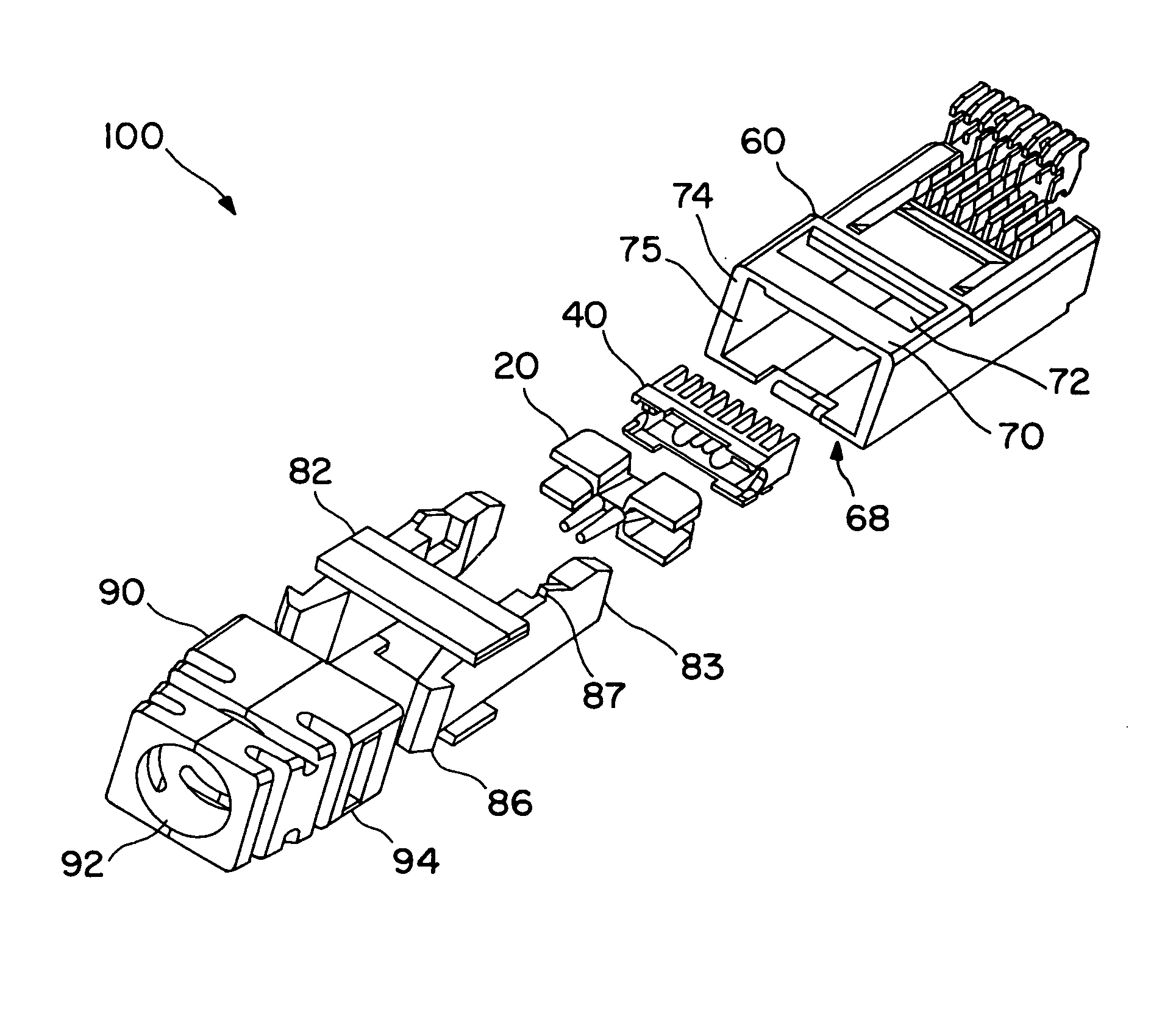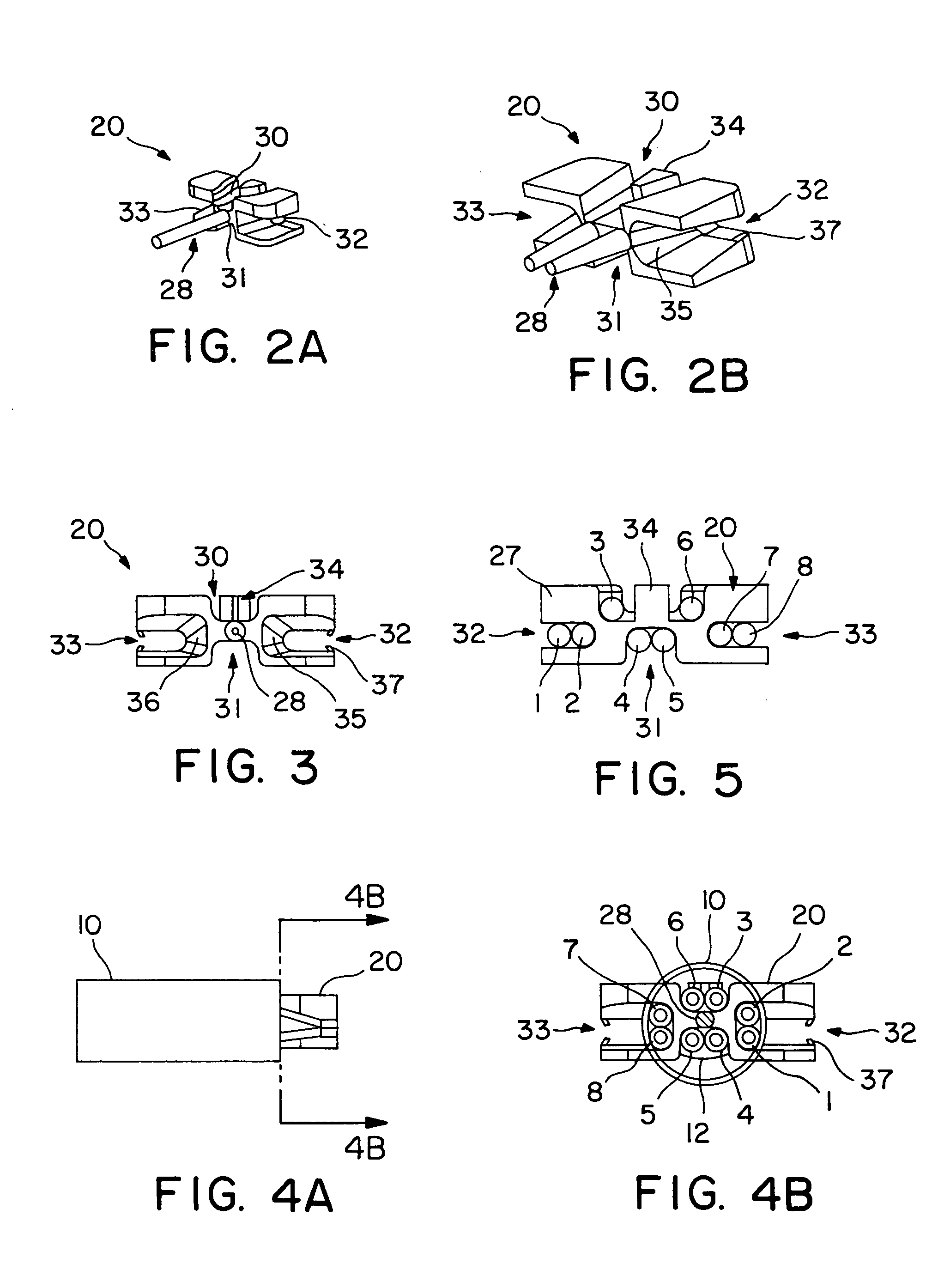Modular cable termination plug
a technology of termination plugs and modules, applied in the direction of coupling contact members, coupling device connections, contact members penetrating/cutting insulation/cable strands, etc., can solve the problems of many communication problems in networks, crosstalk, and crosstalk that occurs when connectors are attached to twisted pair cables, etc., to achieve enhanced performance, reduce next variability, and be more versatile
- Summary
- Abstract
- Description
- Claims
- Application Information
AI Technical Summary
Benefits of technology
Problems solved by technology
Method used
Image
Examples
Embodiment Construction
[0032] Referring now to the drawings, FIG. 1 shows an exploded perspective view of a modular plug assembly 100 in accordance with the claimed invention. In the preferred embodiment of the claimed invention, the plug assembly includes a strain relief boot 90, a strain relief collar 82, a conductor divider 20, a load bar 40, and a housing 60. The preferred modular plug 100 is depicted in an assembled state in the cross sectional view shown in FIG. 1A. As shown in FIG. 1A, the conductor divider 20 and the load bar 40 are designed to fit within the internal cavity 68 of the plug housing 60. The conductor divider 20 and the load bar 40 are secured in their proper location within the plug housing 60 by the walls 83 of the strain relief collar 82. In an assembled state, movement of the conductor divider 20, the load bar 40, and the strain relief collar 82 is preferably minimized through the use of an integrated snap. A horizontal latch tab 87 on the strain relief collar 82 engages against ...
PUM
 Login to View More
Login to View More Abstract
Description
Claims
Application Information
 Login to View More
Login to View More - R&D
- Intellectual Property
- Life Sciences
- Materials
- Tech Scout
- Unparalleled Data Quality
- Higher Quality Content
- 60% Fewer Hallucinations
Browse by: Latest US Patents, China's latest patents, Technical Efficacy Thesaurus, Application Domain, Technology Topic, Popular Technical Reports.
© 2025 PatSnap. All rights reserved.Legal|Privacy policy|Modern Slavery Act Transparency Statement|Sitemap|About US| Contact US: help@patsnap.com



